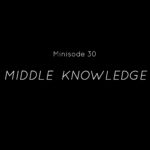This is part of a series of posts on Romans. The main focus of this series will be chapters 9-11 of the letter. These chapters, particularly chapter 9, have been interpreted in various different ways. My aim is to demonstrate what I consider to be the correct interpretation. I will do this by considering the structure and context of the letter and then focusing in on these chapters, showing how the proposed interpretation fits with the context and structure of the letter, as well as being internally consistent within chapters 9-11. Click here for the contents page.
So having established some relevant background and key terms for chapters 9-11, let’s now focus on these chapters, which form the part of the letter that is probably most disputed in terms of how it should be interpreted. I want to show that there is a neat structure to this section of the letter, and that knowing the structure helps us to understand the points Paul was making. I will first set out the structure and then I will summarise each of the sections. Future posts will look in more detail at the different sections.
I have set out my analysis of the structure of Romans 9-11 below. It is a chiastic structure, which is commonly found in the Bible. In order, I have labelled the sections as C2-A1, C2-B1, C2-C1, C2-D, C2-C2, C2-B2 and C2-A2. The “C2-” part shows that this is the C2 section of the letter (chapters 9-11). The next part (e.g. “A1”) shows the subsection within this section of Romans. The two “C2-A” sections match, as do the two “C2-B” and “C2-C” sections, with the “C2-D” section forming the centre of the passage.

The next diagram shows the same structure with added details about each section. This helps to demonstrate the similarities between the corresponding sections (e.g. C2-B1 and C2-B2).

The first section (9:1-5) is setting up the issue that Paul will address for the rest of chapters 9-11: the fact that many of Paul’s fellow ethnic Israelites are not currently trusting in Christ (when using words like ‘currently’, I am always referring to time from Paul’s perspective). This is a tragedy for Paul and his sorrow for the situation is clear.
The final section (11:33-36) is a stark contrast in that, having assessed the situation introduced in the first section (9:1-5), Paul almost explodes in praise of God. What has happened in between to change his emotions from sorrow to praise? It can be seen from the text just before the final section as well as from the central section (10:4-13) that Paul is praising God because his fellow ethnic Israelites can still be saved!
Moving inwards from the outside of the structure shown above, the next pair of sections (9:6-29 and 11:1-32) start to address the situation set out in the first section (9:1-5) and consider whether it is God’s fault that so many ethnic Israelites are not currently trusting in Christ.
The first section of this pair (9:6-29) asks whether God has failed on an earlier promise to save all of ethnic Israel. Paul is responding to a hypothetical objector who thinks that all ethnic Israelites should be saved. Paul’s objective in this section is to demonstrate that God is under no obligation to save all of ethnic Israel. God can save whomever he wants to save.
In the second section of this pair (11:1-32), Paul considers the same issue but from the opposite angle. In this section, Paul is considering the possibility that God has chosen to reject all of ethnic Israel. Paul’s point in this section is that God has not chosen to reject any of ethnic Israel. Paul demonstrates this by showing, first, that there are some ethnic Israelites who have come to faith (such as himself!), showing that God therefore can’t have rejected all of ethnic Israel. Second, he explains that it is still possible for the other Israelites who are not yet trusting in Christ (Paul’s contemporaries from 9:1-5) to become united with Jesus, so they have not been rejected either.
Having shown in these two sections that the situation of 9:1-5 is not God’s fault, the next pair of sections inward from this (9:30-10:3 and 10:14-21) turns the focus onto Israel (i.e. the ethnic Israelites of 9:1-5).
In the first section of this pair (9:30-10:3), Paul explains that these ethnic Israelites have made the error of pursuing righteousness based on their own works. This is contrasted with Gentile Christians, who have obtained righteousness by faith.
In the second section of this pair (10:14-21), Paul considers some possible excuses for why these ethnic Israelites have not come to Jesus (e.g. perhaps they had not heard the good news about Jesus). He rules out these excuses and shows that the situation is simply that these Israelites have not believed what they have heard. Paul therefore puts the blame firmly on the ethnic Israelites of 9:1-5.
Then we have the central section (10:4-13). Paul explains the great news that God has made salvation possible for all. He has made salvation depend on a criterion that, thanks to Christ’s work, we are able to meet: having faith in Christ. This salvation is for all who believe, and is without distinction between ethnic Israelite and Gentile.
Seeing the structure of Romans 9-11 like this helps us to interpret the respective sections. In particular, this applies to the pair of sections 9:6-29 and 11:1-32. The first of these sections (9:6-29) has been interpreted in various different ways by Christians, and the realisation of how it relates to its corresponding section (11:1-32) helps us to understand what 9:6-29 is actually saying. As the two sections look at the same issue from opposite angles (“should God save all ethnic Israelites?” Vs “has God rejected all ethnic Israelites?”), each section acts as a counterbalance for the other. If we interpret one section in a way that goes too far to one extreme, we will find that the other section rules out this interpretation. We must find an interpretation of each of these two sections that is compatible with the other, as well as being compatible with the rest of Romans 9-11 and the letter as a whole.
That will be the plan for the rest of this series of posts.
The next post will cover the first section of this structure (Romans 9:1-5).
For those interested, here are some notes explaining some more details about the structure:
The C2-A sections contain the only uses of “Amen”.
“Called” appears 6 times, five in C2-B1 and once in C2-B2.
“Abraham” only appears twice, both referring to “seed of Abraham” (C2-B1 and C2-B2). “Seed” appears three other times, all in C2-B1.
“Flesh” appears 4 times – twice in C2-A1 and once in each of C2-B1 and C2-B2.
“Father” appears 3 times – once in each of C2-B1 and C2-B2, and once in C2-A1.
“Jacob” appears 2 times – once in each of C2-B1 and C2-B2.
“Mercy” appears 9 times, all in C2-B1 and C2-B2.
“Moses” appears 3 times – once in each of C2-C1 and C2-C2, and once in C2-B1 (but this is not a quote of Moses).
“will”/”wills” appears 5 times – four in C2-B1 and once in C2-B2.
“the Scripture says” appears 3 times – in C2-B1, C2-D and C2-B2.
“name” appears 2 times – in C2-B1 (9:17) and C2-D (10:13) – these refer to God’s name being declared throughout all the earth, and that whoever calls on the name of the Lord shall be saved.
“people” appears 6 times – 3 close together in C2-B1 (9:25-26), and 3 close together around the beginning of C2-B2 (one is at end of C2-C2) (10:21-11:2).
“remnant” in 9:27 and 11:5 are different words, but the word for “reserved” in 11:4 is the same root as 9:27.
“hardening” is different words in the C2-B1 and C2-B2 sections, but the concept is similar.
“righteousness” appears 13 times – 12 between 9:28 and 10:6, one at 10:10.
“Stumbling” appears in 9:32-33 and 11:9 (but different words used in Greek between the two). There is an argument for 9:30-33 being in the C2-B1 section, but I think there is a stronger argument the other way.
“faith/believe” (same word in Greek) appears 14 times. All but one of these are in the C2-C1, C2-D and C2-C2 sections.
“Israel” appears 12 times.
The only uses of the word “Christ” are three times in C2-A1 and three times in C2-D.
This was first published at the Predestination Station, where comments can be made.





